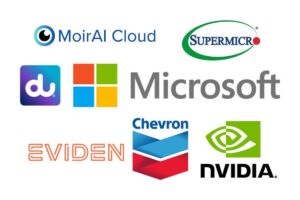Microsoft Copilot: Your Screen’s New Observer – A Welcome Addition if Privacy is Maintained

Microsoft Copilot: A Closer Look at Privacy and Functionality
Microsoft has introduced an innovative feature called Copilot, which enhances user experience across their suite of applications. This tool leverages artificial intelligence (AI) to assist users in various tasks, including writing, data analysis, and project management. In this article, we will explore what Microsoft Copilot is, how it works, and its implications for privacy.
What is Microsoft Copilot?
Microsoft Copilot is an AI-powered assistant integrated into popular Microsoft applications like Word, Excel, and Outlook. This tool aims to streamline workflows by offering suggestions, automating repetitive tasks, and facilitating creative processes. It uses advanced machine learning algorithms to analyze user behavior and preferences, making it a valuable companion for both individuals and teams.
Key Features of Microsoft Copilot
Content Generation: Copilot can help users draft text, compose emails, or generate reports by understanding context and intent.
Data Insights: In Excel, Copilot can analyze datasets to extract valuable insights, create charts, and suggest trends, turning complex datasets into easily digestible information.
Task Automation: The assistant can automate routine tasks, such as scheduling meetings or managing calendars in Outlook, thereby saving time and reducing manual effort.
- Creative Assistance: In Word, Copilot can offer writing suggestions, improve grammar, and help brainstorm ideas, making the writing process more efficient for users.
How Does Microsoft Copilot Work?
Microsoft Copilot is powered by AI models that have been trained on a vast amount of data. It interacts with users in real-time, learning from responses and improving its suggestions over time. The system is designed to integrate seamlessly into existing Microsoft applications, ensuring that users can take full advantage of its capabilities without needing extensive training or adjustment.
User Interaction with Copilot
Users can interact with Copilot through simple commands or prompts. For instance, a user may type, "Can you summarize this document?" and Copilot will analyze the content before providing a concise summary. The goal is to make the experience as intuitive as possible, encouraging users to leverage the tool for everyday tasks.
Privacy Considerations
As with any AI tool that processes data, there are essential privacy concerns that users must consider. Microsoft has emphasized its commitment to user privacy and security, stating that the data processed by Copilot is handled with care.
Key Privacy Features
Data Encryption: Microsoft employs encryption methods to protect user data against unauthorized access.
User Control: Users have the option to customize privacy settings, allowing them to determine what data is shared and how it is used by Copilot.
- Transparency: Microsoft aims to provide clear information about how the Copilot interacts with user data, ensuring that users are informed about their data rights.
Benefits of Using Microsoft Copilot
Integrating Microsoft Copilot into daily workflows can provide numerous advantages:
Increased Efficiency: By automating routine tasks and offering quick suggestions, users can save time and focus on more important responsibilities.
Enhanced Creativity: With the assistance of Copilot, users can enhance their creative processes, leading to improved outcomes in writing and project execution.
Better Decision Making: Access to intelligent data analytics allows for informed decision-making based on real-time insights.
- User-Friendly Experience: The intuitive design of Copilot ensures that users can easily engage with the tool without a steep learning curve.
In summary, Microsoft Copilot represents a significant advancement in how users interact with technology. By enhancing productivity and providing personalized assistance while maintaining a focus on privacy, Microsoft aims to reshape the way tasks are performed in professional environments. While the benefits are clear, users should remain informed about their privacy rights and how their data is being utilized.






